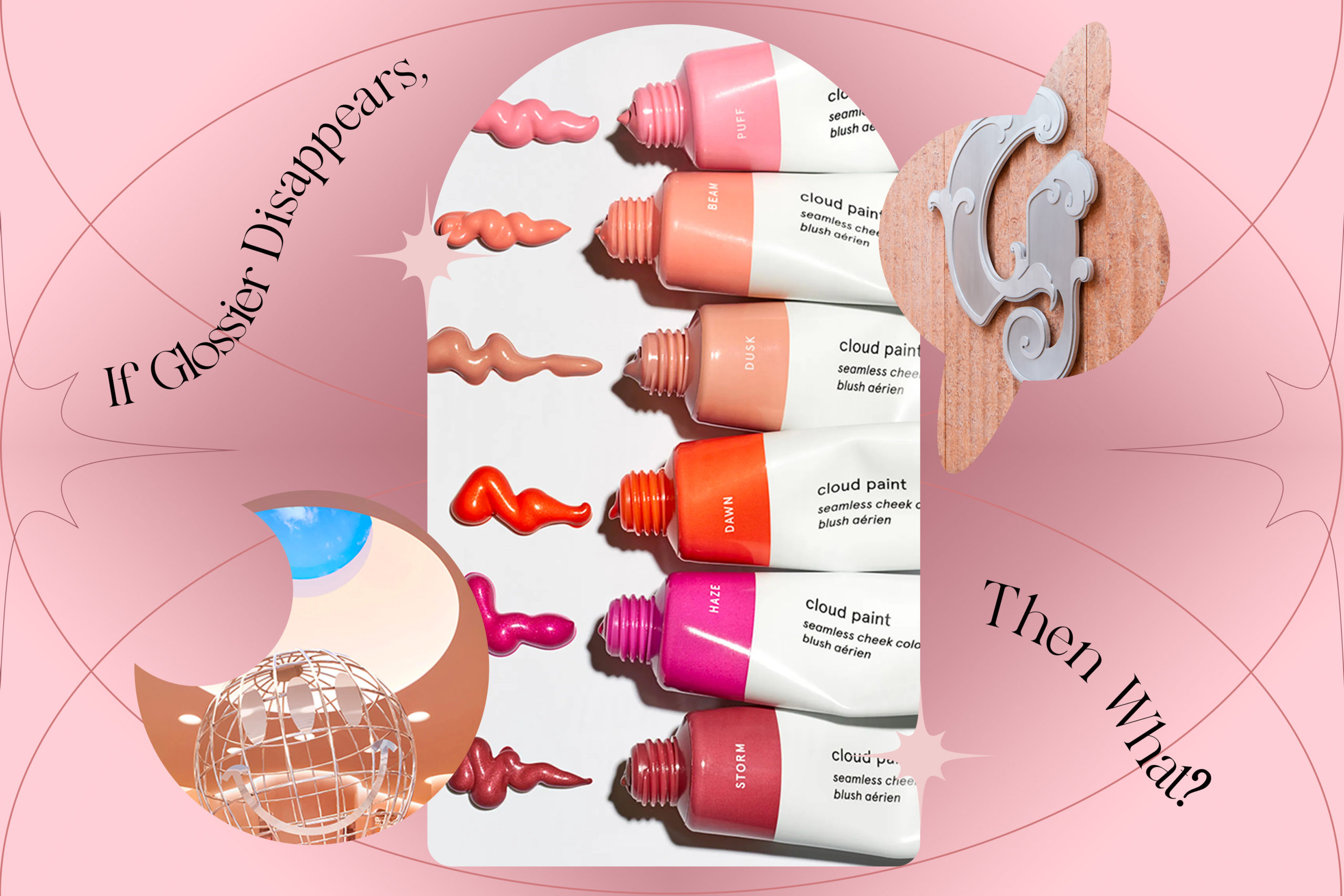Glossier is the “Gen Z” brand everyone is obsessed with. Or at least, was obsessed with. The brand that set so many trends on social media, from the no-makeup makeup look, cream makeup products, and aesthetic skincare packaging, may leave the market. So, what does this mean?
Glossier is a cruelty-free makeup brand launched in 2014 by social media blogger Emily Weiss. She launched her blog “Into The Gloss” back in 2010, which started as a platform for Weiss to review products and give her audience an inside look at her beauty routine. She quickly built a community where she interacted with her audience about their favorite products and where they felt there was white space in the industry. Weiss realized her new goal was to democratize makeup; create a brand solely based on what her audience wanted from their feedback. Glossier was born four years later.
It’s 2022, and cream makeup is still all the rage. Powder complexion products are out, and makeup lovers have made room for cream and liquid blushes, bronzers, highlighters, as well as light coverage base makeup. Of course, the traditional no-makeup makeup look has been around for decades, but Glossier is one of the main reasons for the trend’s comeback. Their Cloud Paint product continuously makes Allure’s best of beauty list, which gave customers an updated version of traditional cream blush back in 2017 when the product first hit the Glossier site. Brands have since come out with similar blush products that come in a squeeze-tube, some drugstore brands like Flower Beauty even duping the product to offer consumers a cheaper version. Glossier was “the social media brand,” setting examples to other brands on how to successfully make it on social media platforms. All this to say, Glossier has had to let go one-third of their entire company? And that their online sales in 2021 dropped 22%? I didn’t see this one coming at all, nor did I understand what could’ve gone wrong. Well, at first.
After letting all this information sink in, I started to think about where Glossier’s struggle began. For such a decision to be made, this had to be going on for longer than we thought. Glossier used to be the “it” brand for social media, but so much has changed in the last few years. They now have some pretty serious competition. At the end of 2020, superstar Selena Gomez launched her brand Rare Beauty, which became the next successful celebrity beauty brand alongside Fenty Beauty. Both of these brands can be purchased directly online and found in stores and online in Sephora, one of the most widely-known beauty retailers. Both Fenty and Rare have released their own cream and liquid blushes, bronzers, highlighters, and light-weight base makeup within the last year. Very similar to Glossier’s entire brand portfolio. The difference? Glossier’s products are not sold in major beauty retailers, and besides the limited stores in New York City and Los Angeles, most consumers have never been able to view or feel their products in person before purchasing. The brand still has yet to partner with major beauty retailers for an in-store display, nowhere for consumers to easily access their products.
As cream makeup became a trend in 2021, many brands expanded their product line to include these sought-after items. Brands with more established customer loyalty like Colourpop Cosmetics and Elf Cosmetics offer their cream products at lower prices for just as great quality. Many brands also pivoted their marketing tools over to TikTok, the social media platform that continues to rise and gain popularity, especially with Gen Z. KVD Vegan Beauty found great success in this, where their Good Apple Foundation Balm went viral in 2021 and sold out everywhere. Long-time brands like Charlotte Tilbury also made their way over to TikTok, where their bronzer, blush, and highlighting wands went viral, and customers cleaned out the stock.
So, what do these six brands all have in common that, in my opinion, Glossier is lacking? I think they became too comfortable in their product niche, which unfortunately isn’t a niche anymore—having access to brands in-person at stores and their social media strategy, whether it’s hopping on content trends or working with the latest influencers. This doesn’t have to be the end for Glossier.
Relying solely on e-commerce is always a risk, especially when they want to shop in-person is in high demand. I hope this isn’t the end of Glossier, just a wake-up call to find how they can stand out again. Whether it be through TikTok, working with new influencers, partnering with accessible retailers, or even expanding their product portfolio. Glossier, this is your sign.
Words by Amanda Applebaum.
Graphic by Danna Macias.

